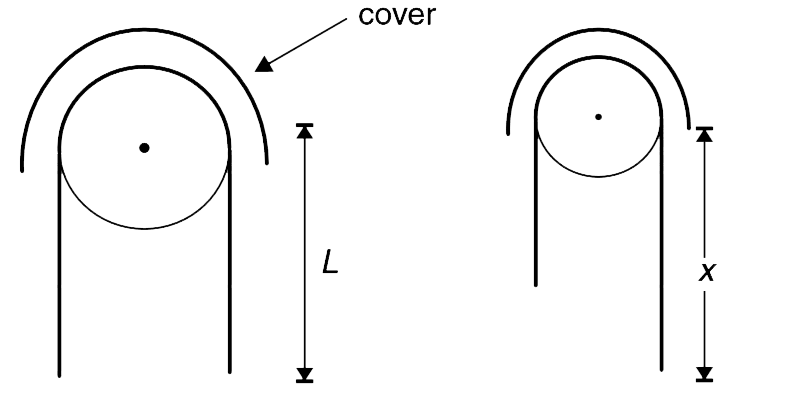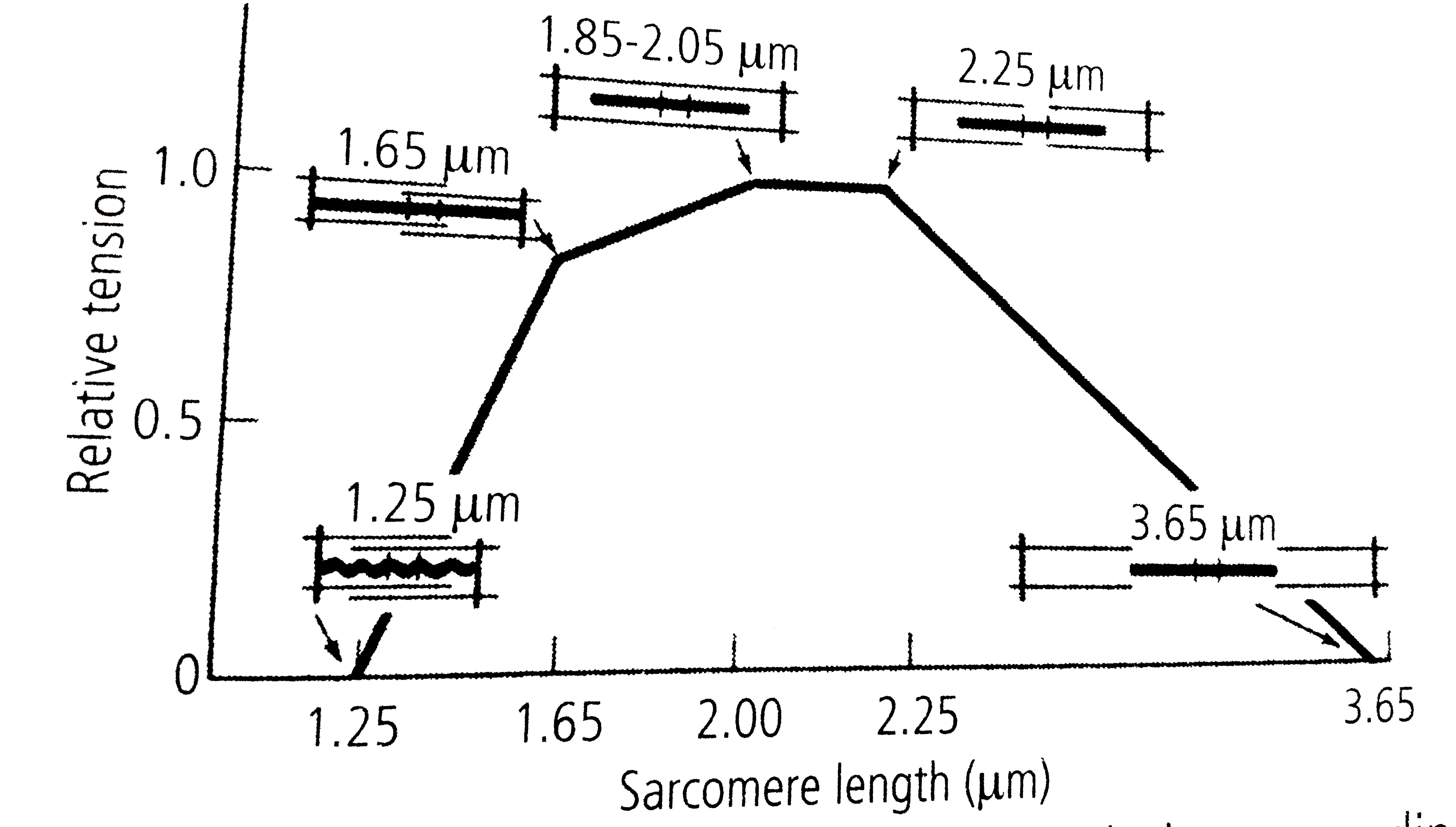The order in contraction in muscle in
(a)Generation of action potential in muscle fibres
(b)Release of neuro transmitter at motor
c) Formation of cross linkages between actin and myosin
(d) Release of Ca2+ and binding to troponin C
a→b→c→dto
b→a→d→c
b→c→a→d
a→d→b→c→
The correct Answer is:B
To determine the correct order of events in muscle contraction, we can analyze the steps involved in the process. Here’s a step-by-step breakdown:
1. Release of Neurotransmitter at Motor End Plate (B): The process begins when a neural signal from the central nervous system reaches the neuromuscular junction. This signal triggers the release of the neurotransmitter acetylcholine into the synaptic cleft.
2. Generation of Action Potential in Muscle Fibers (A): The binding of acetylcholine to its receptors on the muscle fiber's membrane generates an action potential. This electrical impulse travels along the muscle fiber.
3. Release of Ca²⁺ and Binding to Troponin C (D): The action potential causes the sarcoplasmic reticulum to release calcium ions (Ca²⁺) into the sarcoplasm. These calcium ions bind to troponin C, which leads to a conformational change that exposes the binding sites on actin filaments.
4. Formation of Cross Linkages between Actin and Myosin (C): With the binding sites on actin now exposed, the myosin heads can attach to these sites, forming cross-bridges. This interaction is essential for muscle contraction as it allows the sliding of actin over myosin, leading to muscle shortening.
Putting these steps together, the correct order of events in muscle contraction is:
1. Release of Neurotransmitter at Motor End Plate (B)
2. Generation of Action Potential in Muscle Fibers (A)
3. Release of Ca²⁺ and Binding to Troponin C (D)
4. Formation of Cross Linkages between Actin and Myosin (C)
Thus, the correct sequence is B, A, D, C.
1. Release of Neurotransmitter at Motor End Plate (B)
2. Generation of Action Potential in Muscle Fibers (A)
3. Release of Ca²⁺ and Binding to Troponin C (D)
4. Formation of Cross Linkages between Actin and Myosin (C)
Similar Questions
Knowledge Check
- Question 1 - Select One
Arrange the following events of muscle contraction in the sequence :
(i) Generate an action potential in the sarcolemma
(ii) Form a cross bridge
(iii) Release a neurotransmitter (Acetylcholine)
(iv) Release of calcium ions in sarcoplasm
(v) Pulls the attached actin filaments towards the centre of "A" band
(vi) Remove the masking of active sites for myosin
The correct option is :-Ai−ii−iii−iv−v−viBiii-iv-i-ii-vi-vCiii-i-iv-ii-v-viDiii-i-iv-vi-ii-v - Question 2 - Select One
The steps involved in the mechanism of muscle contraction are given below.
Arrange the steps in proper sequential order and select the correct option.
I. Release of calcium ions in the sarcoplasm.
II. Signal sent by the CNS via a motor neuron.
III. Binding of calcium with a subunit of troponin on actin filaments.
IV. Generation of the action potential in the sarcolemma.
V. Binding of myosin head to the exposed active sites on actin to form a cross-bridge.
VI. Inward pulling of ‘Z’ line attached to actin causing shortening of the sarcomere.
VII. Pulling of the attached actin filaments towards the centre of 'A' band.
VIII. Release of neurotransmitter acetylcholine and generation of the action potential in the sarcolemma.AIII, II, V, I, IV, VI, VII, VIIIBII, VIII, IV, I, III, V, VII, VICI, VIII, VI, II, V, IV, III, VIIDII, IV, V, I, III, VII, VIII, VI - Question 3 - Select One
The steps involved in the mechanism of vision are given below. Arrange them in proper sequence and select the correct option.
A. Dissociation of retinal from opsin and generation of potential difference in photoreceptor cells.
B. Focusing of the light rays in visible wavelength on the corner through the lens.
C. Generation of the action potential in ganglion cells through bipolar cells.
D. Analysis of neural impulse and formation of aa image on the retina.
E. Transmission of the action potential by the optic nerve to the visual cortex.AA,C,E,D,B,BB,A,C,D,E,CB,A,C,E,D,DC,B,A,D,E
A heavy rope of mass m and length 2L is hanged on a smooth little peg with equal lengths on two sides of the peg. Right part of the rope is pulled a little longer and released. The rope begins to slide under the action of gravity. There is a smooth cover on the peg (so that the rope passes through the narrow channel formed between the peg and the cover) to prevent the rope from whiplashing.
(a) Calculate the speed of the rope as a function of its length (x) on the right side.
(b) Differentiate the expression obtained in (a) to find the acceleration of the rope as a function of x.
(c) Write the rate of change of momentum of the rope as a function of x. Take downward direction as positive
(d) Find the force applied by the rope on the peg as a function of x.
(e) For what value of x, the force found in (d) becomes zero? What will happen if there is no cover around the peg ?
 View Solution
View SolutionThe given graph shows length-tension curve for a typical vertebrate sarcomere.

By analysing the graph, what can you deduce regarding the muscle contraction?
(i) Neither the myosin filaments nor the actin thin filaments change in length when a sarcomere shortens or is stretched. Instead, it is the extent of ocerlap between actin and myosin filaments that changes.
(ii) The total tension produced by a sarcomere is proportional to the total number of cross-bridges that can interact with actin filaments, and this number in turn is proportional to the amount of of overlap between thick and thin filaments.
(iii) The tension produced by the muscle is maximal when the overlap between thick and thin filamentss allows the largest number of myosin cross-bridges to bind to actin.
(iv) Tension drops off with increased lenght, because the thick and thin filaments overlap less and fewer cross-bridges can bind.
Tension drops off with decreased length, because thin filaments at the two ends of the secromere begin to collide with each other, preventing further shortening.View SolutionConsider the following statements each with one or two blanks.
(i)Each pectoral girdle consists of a (A) and (B) .
(C) is a condition of rapid spasms (wild contractions) in muscle due to low Ca++ in body fuild.
Each organised skeletal muscle in our body is made of a number of (D) held together by a common collagenous connective tissue layer called (E) .
Which one of the following options correctly fills the blannks in any two the statements ?View SolutionWhich of the following statements given below are true with reference to muscle contraction.
I. Neurotransmitter acetycholine is released as nerve impulse reaches the end of axon and binds to receptor sites of motor end plate.
II. Action potential passes from motor end plate over sarcoplasmic and then into the T-tubules and sarcoplasmic reticulum.
III. Calcium ion are released into the sarcoplasm bind to troponin, causing a change in its shape and position.
IV. Myosin cross bridges are able to bind to exposed active sites of actin.
Choose the correct option.View SolutionCapital Region is badly hit'. as the summg of agricultural residue in Punjab and Haryana is releasing large volumes of smoke containing, among other pollutants, highly damaging fine particulates, or PM2.5. The problem is (A) by the burning of urban waste diesel soot vehicular exhaust, road and construction dust,' and powe? eneration. Al though India has nine of the 10 most polluted cities m the world, it has not taken consistent action on pollution. (B) Tens of millions live with ambient air quality that is well short of even the relaxed parameters the country has set for fine paraiculates, compared with that of the World Health Organisation. India should at least now' give high importance to the WHO warning about air pollution being the new tobacco. (C) This year's prevailing.(1) air quality rating for Delhi and poor (2) conditions severe (3) in other cities in the Indo-Gangetic Plain should compel a decisive (4) shift in policy. The Centre and the State governments need to get into crisis mode to dramatically reduce emissions. (D) ________ , which is a direct source, and emissions with oxides of nitrogen and sulphur from vehicles that tum into fine particulates through atmospheric reactions. Failure to take sustainable and urgent measures will (E) long-term harm on public health, affecting children even more by putting them at higher risk for diseases.
The sentence given in (C) has four words printed in bold. Amongst the given bold words, which of the following must replace each other to make the sentence contextually correct and meaningful?View Solution

